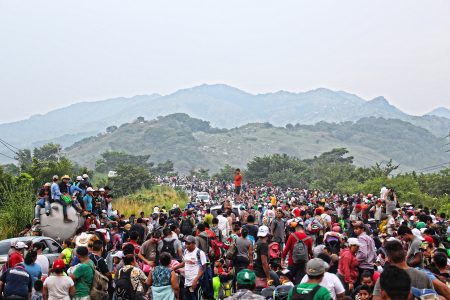As of 2020, approximately 16.2 million people have migrated from Central America.
Many countries in the region experience high rates of poverty and conflict, which have worsened as a result of the pandemic.
Migrants leave the region to pursue a better life, to flee violence, and to reunite with family. Most travel north through Mexico to the US.
Until conditions sustainably improve, migration will be considered a necessity rather than a choice for many.
However, migrating through Central America can be treacherous, especially for women, children, those with disabilities, and members of the LGBTQ community.
Many migrants return home due to the challenges they encounter along the way.
Crossing the Darien Gap
The Darien Gap is a 100 mile stretch of jungle between Colombia and Panama. For many years, it was considered unnavigable but has become a highly trafficked route for migrant hoping to reach the US, Canada or Mexico.
In 2021 alone, 91,300 migrants crossed the perilous Darien jungle, nearly 19,000 were children.
Most are from Haiti, Cuba, Africa or Asia.
Abuse, extortion, kidnapping, human trafficking, sexual violence, and other crimes are common dangers along this route.


